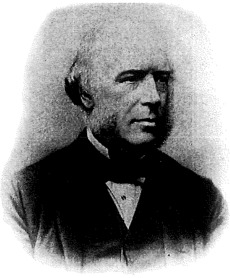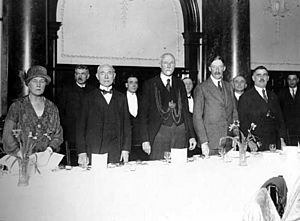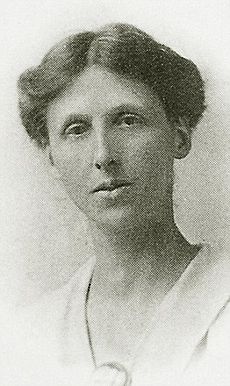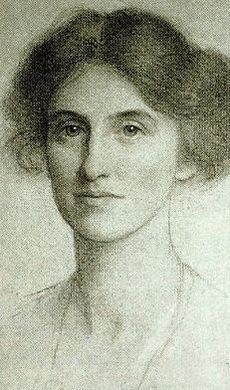Lupton family facts for kids
The Lupton family from Yorkshire, England, became well-known during the Tudor era. This was thanks to Roger Lupton, who was a very important person at Eton College and a chaplain to King Henry VII and Henry VIII. Later, during the Georgian era, the family became successful merchants and church leaders in Leeds.
They were described as a "landed gentry, a political and business dynasty" in Leeds's old records. This means they owned a lot of land and were powerful in both business and politics. They became very successful woollen cloth merchants and manufacturers. They grew their business during the Industrial Revolution and traded their goods all over northern Europe, the Americas, and Australia.
Members of the Lupton family played a big part in British politics and the community life of Leeds, even into the 1900s. Some were friends with the British royal family and were philanthropists, meaning they gave a lot of money to good causes. Several Luptons became Lord Mayors of Leeds and Members of Parliament (MPs). They often held modern and progressive views. They were connected to both the Church of England and the Unitarian church. The Lupton Residences at the University of Leeds are named after them.
Interestingly, Catherine, Princess of Wales is a great-granddaughter of Olive Lupton. Olive married Richard Noel Middleton in 1914.
Contents
- Where the Luptons Came From
- The Luptons of Leeds
- Early Beginnings in Leeds
- The Next Generation of Luptons
- William's Descendants: Key Family Members
- Arthur Lupton (1809–1889)
- Darnton Lupton (1806–1873)
- Francis Lupton III (1813–1884)
- Joseph Lupton (1816–1894)
- Alan Lupton (1846–1918)
- Kate Lupton (Baroness von Schunck) (1833–1913)
- Francis Martineau Lupton (1848–1921)
- Arthur G. Lupton (1850–1930) and His Daughters
- Sir Charles Lupton (1855–1935)
- Hugh Lupton (1861–1947)
- Olive Middleton (née Lupton) (1881–1936)
- Anne Lupton (1888–1967)
- Geoffrey Lupton (1882–1949)
- Barbara Lupton (Lady Bullock) (1891–1974)
- Agnes and Norman Darnton Lupton
- Alan Cecil Lupton (1873–1949)
- The Lupton Legacy
- Images for kids
Where the Luptons Came From
The name Lupton comes from a place called Lupton in Cumbria (which used to be called Westmoreland). In Yorkshire, the name Lupton was first recorded in 1297. People with the name were found in different places like Thornton in Lonsdale, Pateley Bridge, and Keighley over the centuries. For example, Father Robert Lupton was the Vicar of Skipton in 1430.
Roger Lupton: A Key Figure
Roger Lupton, a very important person and supporter of Eton College, was born in Sedbergh, Yorkshire, in 1456. He finished his studies at King's College, Cambridge in 1483. Even though he didn't go to Eton himself, many of his relatives from Yorkshire did. Roger Lupton was an expert in canon law (church law) and a Canon of Windsor. He was a chaplain to Henry VIII when Henry became king in 1509.
Lupton founded Sedbergh School as a chantry school (a school connected to a church, where prayers were said for the dead). This happened while he was Provost of Eton. By 1528, land was bought and the school was built. He was Provost of Eton College for 30 years, and a tower in the school yard is named after him. He died in 1540 and was buried in his chapel at Eton.
The Luptons of Leeds
Early Beginnings in Leeds
The first known member of the Lupton family in Leeds was Thomas Lupton of Holbeck. His son, also named Thomas (born 1628), went to Leeds Grammar School and then to St John's College, Cambridge. He later became a church minister.
From Clergy to Merchants
Francis Lupton (1658–1717) married Esther Midgeley in 1688 at Adel Church near Leeds. Francis became a clerk at Leeds Parish Church. They had nine children. Their son William I (1700–1771) was a yeoman farmer (a farmer who owned his land) and a clothier. He had business connections in the Netherlands and Germany. He was a skilled cloth-dresser, which meant he finished the cloth and was highly paid.
William I's three sons went to Leeds Grammar School. The oldest, Francis II (1731–1770), went to Lisbon to trade English cloth. He was there during the terrible 1755 Lisbon earthquake. He was known as an "eminent merchant" (a very important merchant) in Lisbon.
William I's second son, William II (1732–1782), went to Sedbergh School and St John's College, Cambridge. He became a teacher at Leeds Grammar School and a church minister in Headingley. His son, Rev John Lupton, also became a minister. Arthur I (1748–1807), William I's third son, went to school in Frankfurt, Germany, to learn German and French.
Arthur Lupton came back to England in 1766. In 1768, he started a company called Lupton & Luccock in Rio de Janeiro. The main company, William Lupton and Company, was officially started in 1773, but they had been trading cloth before that. Arthur Lupton helped manage the cloth halls in Leeds, which were places where cloth was traded. In 1774, leading merchants built the 3rd White Cloth Hall.
Arthur Lupton married Olive Rider in 1773. She brought a large sum of money, £5,000, to the marriage. Her father owned a lot of land in Leeds. After her father died, Lupton and his wife inherited the land, which later passed to their sons, William and Arthur.
The Next Generation of Luptons
William Lupton (1777–1828), Olive Rider's grandson, inherited most of the family estate. His brother, Arthur II (1782–1824), inherited a smaller part. They divided the property in 1811. William took the "Town End" part, which included his father's cloth dressing mill, warehouses, and a large house. This property had a woollen mill, a reservoir, and a steam engine. William and his brother Arthur II worked together in the business.
Business was not always easy. They lost money in 1806 but recovered in 1809. In 1819, William partnered with his nephew David Rider, but William's share was much larger. William also had to deal with the complex estate of his wife's grandfather, which took 15 years to sort out. The company's trade in South America faced difficulties. During the 1820s, the business made little profit. Arthur Lupton, who traveled for the business, died in Paris in 1824, leaving his wife Ann to raise four children. William Lupton died in 1828, leaving his wife, ten children, and many debts.
William's widow, Ann Lupton, was a very capable woman. She kept the family business going with her sons Darnton, Francis, and Arthur. As the person in charge of her husband's will, she started developing the family land. She created Merrion Street and Belgrave Street with plots for houses. She retired in 1858 and died in 1865.
Religion, Politics, and Helping Others
The Luptons were originally Anglicans (Church of England), but by the early 1800s, they became Dissenters, joining the Unitarian church at Mill Hill Chapel. This group included other important merchant families. Their church loyalty matched their political views; they were mostly Whigs and later Liberals. They supported new libraries and societies that promoted learning and science, like the Leeds Philosophical and Literary Society, which started Leeds City Museum.
Arthur Lupton II (1782–1824) was the father of Arthur Lupton (1819–1867), a Unitarian minister. Arthur's son, Arnold Lupton, was a Liberal MP from 1906 to 1910. Arnold Lupton's wife, Jessie (1859–1938), was active in politics and worked with the Leeds branch of the National Anti-Vivisection Society, which supported animal welfare.
William's Descendants: Key Family Members
Arthur Lupton (1809–1889)
Arthur (1809–1889), one of William III's children, moved to Newton Hall in Potternewton in the 1840s. He divided some of his estate, and Newton Grove was built in the 1850s. He married Jane Crawford in 1866 and moved to a house that was later renamed Headingley Castle.
Darnton Lupton (1806–1873)
Darnton Lupton (1806–1873) lived at Potternewton Hall from the 1830s. He was the Mayor of Leeds in 1844 and a magistrate (a local judge). He was also a director of the Bank of Leeds. Darnton Lupton supported the building of Leeds Town Hall. He was part of the group that welcomed Queen Victoria and Prince Albert when they opened the town hall in 1858. He was given the title of Chevalier of the Legion of Honour by Napoleon III for showing cloth at the Paris Exhibition in 1855.
Darnton and his brother Francis Lupton became co-owners of the Newton Hall estate in 1870. Darnton married Sarah Darnton Lubbock, who died shortly after their daughter Kate was born. He then married Anna Jane Busk in 1838. Anna Lupton supported the North of England Council for Promoting the Higher Education of Women, which worked to improve education for women.
Francis Lupton III (1813–1884)
Francis III (1813–1884) went to Leeds Grammar School. He was only 15 when his father died, but he already knew a lot about the cloth trade. He joined the board of the Bank of Leeds, became a magistrate for the West Riding of Yorkshire, and helped care for the poor in Roundhay. He was also chairman of the finance committee for the Yorkshire College of Science, which started in 1874.
In 1847, he married Frances Greenhow, who was the niece of famous writers and reformers Harriet and James Martineau. Frances was a Unitarian her whole life. She was a key person behind the Yorkshire Ladies Council of Education and helped raise money to start Leeds Girls' High School in 1875. She was also involved with the Royal Society of Arts' Education for Girls Committee.
Francis and Frances Lupton lived at Potternewton Hall from 1847. They later moved to Beechwood, a large Georgian house in Roundhay. Their sons, Frank, Arthur, Charles, and Hugh, held important public jobs in Leeds.
Joseph Lupton (1816–1894)
Joseph (1816–1894), William III's son, was a strong Liberal and was part of the National Reform Union. He was a leading Unitarian and helped plan and pay for the move of Manchester New College (a training college for ministers) from London to Oxford. He was very passionate about ending slavery, working with Charles Wicksteed, the minister of Mill Hill Chapel. They both admired William Lloyd Garrison, who wanted slavery to end immediately. Joseph Lupton also supported the campaign for women to get the right to vote. He married Eliza Buckton in 1842. Their son, Henry (1850–1932), was a cloth merchant.
Alan Lupton (1846–1918)
Alan (1846–1918), Darnton's son, grew up at Potternewton Hall. He married Emma Buckton in 1872. He was a Justice of the Peace (a local judge), a woollen manufacturer, and chairman of a company that owned newspapers and magazines. He enjoyed carriage driving. During the Boer War and the First World War, he provided horses and other supplies for the war effort. He died at his home in Ripon.
Kate Lupton (Baroness von Schunck) (1833–1913)
Kate (1833–1913), Darnton's only daughter, grew up at Potternewton Hall. She married Edward, Baron von Schunck, in 1867. She was a wealthy woman who was interested in the Yorkshire Ladies Council of Education. She helped establish Leeds Girls' High School with her aunt, Frances Lupton. She and her cousin Olive Middleton volunteered to help "friendless girls." She also supported Mill Hill Chapel, Leeds Infirmary, and the University of Leeds.
Her daughter, Florence Schunck, married Albert Kitson. During the First World War, their home, Gledhow Hall, was used as a hospital, where Kate's granddaughter Doris Kitson worked as a nurse. Kate was invited to the coronation of King George V in 1911. She died in 1913.
Francis Martineau Lupton (1848–1921)
Francis Martineau Lupton (1848–1921), known as Frank, was Francis III's oldest son. He went to Leeds Grammar School and Trinity College, Cambridge. He then joined the family business. From the 1880s, Wm. Lupton & Co changed from just trading cloth to manufacturing it. They bought other mills and used electricity to power their machines. They also started using new sources of wool from the Americas and Australia.
In 1880, Frank Lupton married Harriet Albina Davis. She died in 1892, shortly after their youngest son was born. They had two daughters and three sons. Frank Lupton and his family lived at Rockland, a house on the Newton Park Estate, which he and his brothers inherited.
Frank Lupton cared deeply about the poor. He was inspired by social reformer Octavia Hill and worked to improve poor housing. For ten years, starting in 1896, he led the council's Unhealthy Areas Committee. This committee cleared almost 4,000 slum buildings in Leeds and organized new housing. He wrote a book about this work called Housing Improvement: A Summary of Ten Years' Work in Leeds (1906). During the Great War (World War I), he served on the Pensions Committee. He was also very active in his Unitarian church, Mill Hill Chapel.
Lupton's three sons all died in the Great War. Captain Maurice Lupton was killed in 1915. Lieutenant Lionel Martineau Lupton was wounded and later killed in the Battle of the Somme in July 1916. Major Francis Ashford Lupton was found dead in February 1917 after going out on reconnaissance. After their deaths, Frank Lupton turned his family home, Rockland, into a place for the children of sailors and soldiers. In 1917, King George V sent a letter to Lupton, recognizing the great loss of his "gallant" sons.
Frank Lupton was a very generous person. He gave money to many causes and institutions, including the Octagon Chapel in Norwich and the rebuilding of Martineau Hall, a Sunday school.
Arthur G. Lupton (1850–1930) and His Daughters
Arthur Greenhow Lupton (1850–1930) was Francis III's second son. He went to Leeds Grammar School and joined the family business at 16. He became a governor of the Yorkshire College at 25 and later chairman of its Finance Committee. He helped separate the Yorkshire College from the Victoria University, leading to Leeds University getting its royal charter in 1904. He was named its first Pro Chancellor. He hosted George V when the King visited the university in 1915. He held this position for 16 years and then worked to improve cooperation between the university and industry.
Arthur also saw the need for large-scale electricity. He founded the Yorkshire Electric Power Company and Electrical Distribution of Yorkshire Ltd. He was also a director of the North Eastern Railway and a magistrate. During the Great War, he set up a factory to fill shells for the war. After his brother Frank died in 1921, Arthur took over Wm. Lupton & Co.
Arthur married Harriet Ashton and had two daughters: Elinor Gertrude (1886–1979) and Elizabeth (Bessie, 1888–1977). His wife died shortly after Bessie was born. Their second cousin, Beatrix Potter, sent them her own hand-drawn Christmas cards. Both sisters worked as nurses in France during the Great War.
Elinor Lupton received an honorary degree for her work at Leeds University in 1945. The Lupton Residences at the university are named after her and her father. Elinor was a J.P. and, in 1942–43, was the Lady Mayoress for Leeds' first female Lord Mayor, Jessie Beatrice Kitson. The sisters hosted visits from royalty, including the Princess Royal. In 1951, the Lupton sisters donated land to expand the Leeds University campus. They also ran a rare-breed goat farm.
To protect open land, the sisters put a special rule in the ownership deeds to keep Asket Hill as grassland. After Elinor's death, Leeds Girls' High School acquired a former church and renamed it the Elinor Lupton Centre.
Sir Charles Lupton (1855–1935)
Charles Lupton (1855–1935), Francis III's fourth son, went to Leeds Grammar School, Rugby School, and Trinity College, Cambridge. He became a solicitor (lawyer) in 1881. In 1888, he married Katharine Ashton. He was elected to the board of Leeds General Infirmary and became its treasurer and chairman. He hosted Princess Mary when she visited the Infirmary in 1922. His daughter, Frances Grace Lupton (1893–1937), also studied to be a solicitor.
From 1915 to 1916, while Lord Mayor of Leeds, Lupton raised money to expand the military hospital at Chapel Allerton Hospital. He inspected troops with his brothers to support the Leeds Pals battalion. He was a Liberal who became a Liberal-Unionist. In 1926, he was given the Freedom of the City. He helped build the Leeds Outer Ring Road and widen other roads. He left his art collection to the City of Leeds.
Hugh Lupton (1861–1947)
Hugh Lupton (1861–1947), Francis III's fifth son, went to Rugby School and University College, Oxford. He trained in engineering and became managing director of Hathorn Davey, a company that made large pumping machines. He was a member of the Institute of Mechanical Engineers.
He served on the local council and was elected to Leeds City Council in 1913. He was chairman of the Electricity Committee for many years. In 1926, he became Lord Mayor of Leeds, with his wife Isabella as Lady Mayoress. They hosted visits from the Princess Royal and Lord Harewood. In 1933, Hugh Lupton was presented to King George V and Queen Mary at Leeds Town Hall.
Both of Hugh Lupton's sons survived the Great War. Surgeon Charles Athelstane Lupton wrote a book about the Lupton family. His other son, Hugh Ralph Lupton, married Joyce Ransome, the sister of author Arthur Ransome (who wrote Swallows and Amazons). Hugh's family includes performer Hugh Lupton and author Rosamund Lupton.
Olive Middleton (née Lupton) (1881–1936)
Frank Lupton's oldest daughter, Olive (1881–1936), grew up at Rockland on the Newton Park estate. She went to Roedean School and was accepted to University of Cambridge but stayed home to help her father. She was involved with the Leeds Association of Girls' Clubs and volunteered at Stead Hostel, a home for working women and girls.
In 1914, Olive Lupton married solicitor Noel Middleton. He later became a director of William Lupton & Co. During the First World War, she volunteered as a nurse at Gledhow Hall, her cousin Lady Airedale's home. Her husband was fighting in the war at the same time.
Olive supported the Leeds Ladies' Association for the Care and Protection of Friendless Girls. She also helped with fundraising for Leeds General Infirmary's Appeal, which was supported by the Princess Royal.
After her death in 1936, her descendants inherited money from trust funds her father had set up. Noel Middleton's family sold William Lupton & Co in 1958.
The Middletons' youngest son, Oxford-educated pilot, Peter (1920–2010), is the grandfather of Catherine, Princess of Wales, Philippa Charlotte Matthews, and James William Middleton. He was a co-pilot for Prince Philip during a trip to South America in 1962.
Anne Lupton (1888–1967)
Francis Martineau's younger daughter, Anne (1888–1967), went to Newnham College at Cambridge University. In the 1920s, Anne and her cousin Elinor Lupton were members of the Classical Association. Anne wanted to join the family business, but women were not allowed. So, she traveled for many years in South America and Canada. She never married. When she returned to England, she set up a home in Chelsea with Enid Moberly Bell, a writer and the first headmistress of Lady Margaret School. In 1937, Anne Lupton paid for the purchase of Elm House, a Georgian property that became Lupton House, where the school is located.
From 1915, Anne Lupton was secretary of the Leeds General Hospital Committee and helped organize the 2nd Northern General Hospital. She and her uncle Charles Lupton were guests when King George V visited the military hospital in 1915. In 1920, she received the M.B.E. award for her volunteer work during the war.
Anne Lupton founded and organized the London Housing Centre. In 1938, she organized an exhibition for the 100th birthday of Octavia Hill, which Queen Mary visited at Anne's request.
Geoffrey Lupton (1882–1949)
The oldest son of Henry Lupton (who died in 1932), Geoffrey Lupton (1882–1949), was an important person in the Arts and Crafts Movement. He learned from Ernest Gimson, a famous architect-designer. Lupton Hall was built in 1911 at Bedales School, which Lupton and his siblings attended. He largely paid for the project and asked Gimson to design the building.
Barbara Lupton (Lady Bullock) (1891–1974)
Henry Lupton's daughter, Barbara (1891–1974), grew up in Headingley, Leeds. She attended Bedales School, Newnham College, Cambridge (1910–1913), and the London School of Economics. During the First World War, Barbara and her second cousin Anne Lupton worked for the war effort. Barbara worked for the Ministry of Munitions Welfare Department.
Barbara Lupton married Sir Christopher Bullock in 1917. Sir Christopher Bullock was a civil servant at the British Air Ministry. He was Winston Churchill's main private secretary in 1919 and later became the Air Ministry's Permanent Under-Secretary. The Bullocks had two sons who also worked in public service.
Agnes and Norman Darnton Lupton
Siblings Agnes (1874–1950) and Norman Darnton Lupton (1875–1953), who were grandchildren of Darnton Lupton, left a large gift to Leeds Art Gallery in 1952. Norman was an engineer and artist. He was a Major during the First World War. Their donation to the Leeds Art Gallery included artworks by famous artists like John Sell Cotman and J. M. W. Turner.
Alan Cecil Lupton (1873–1949)

Darnton Lupton's grandson, Alan Cecil Lupton (1873–1949), was born in Leeds and graduated from Eton College and Trinity College, Cambridge. In 1905, he married Mary Emma. Alan was a J.P. and lived at Ainderby Hall, where he farmed. During the First World War, he and his father bought horses for the army.
The Lupton Legacy
Many memorials to the Lupton family can be found in Leeds Minster. More recent memorials are in St John's Church in Roundhay and Mill Hill Chapel, where a stained glass window remembers the family.
By the start of the Second World War, the land at Potternewton Hall and Newton Hall – known as the Newton Park Estate – had become the largest private housing estate in Leeds. Elinor and Elizabeth Lupton were the third generation to live at Beechwood. They often opened their gardens to the public in the 1940s and 1950s.
Farmland around Beechwood was sold to Leeds City Council by the 1950s. The Seacroft council estate, with 500 council houses, shops, parks, and Beechwood Primary School, was built on it. Beechwood, the Georgian mansion, stayed in the family until the 1990s. In 2014, some of the estate was still owned by Mr. M., Mr. D., and Ms. H. Lupton, who were great-nephews and niece of Elinor and Elizabeth Lupton. They wanted to protect their family's land, especially for wildlife, just as their great-aunts had done.
The Lupton name is remembered in Leeds in several ways: the Leeds University's Lupton Residences, Lupton House at Leeds Grammar School, the Leeds street names Lupton Avenue and Lupton Street, and Lupton's Field at Asket Hill, Roundhay.
One block of the Quarry Hill flats, built in 1938 in Leeds, was named Lupton House. Lupton Hall at Bedales School was named after Geoffrey Lupton.
Images for kids





































